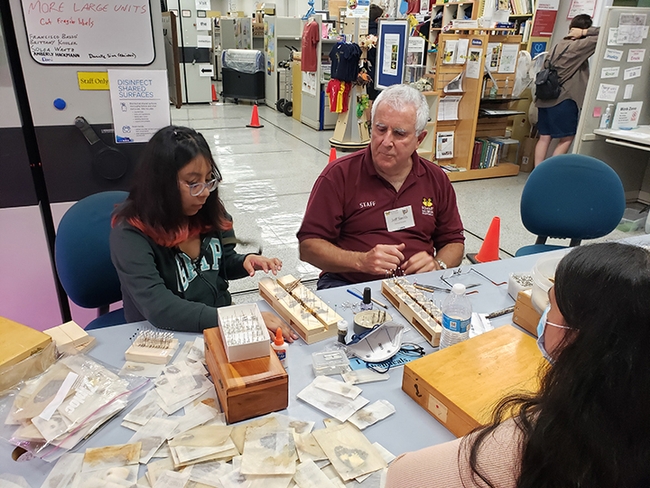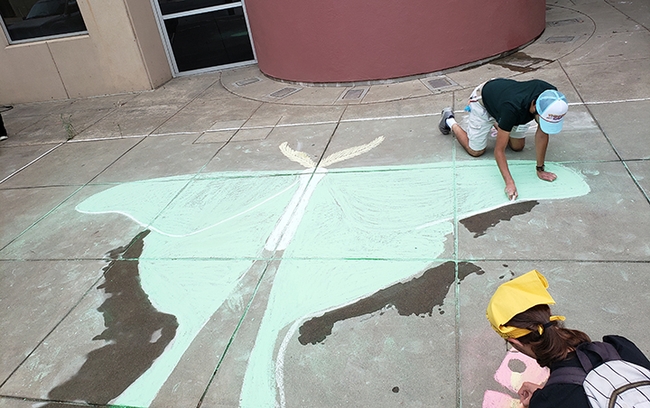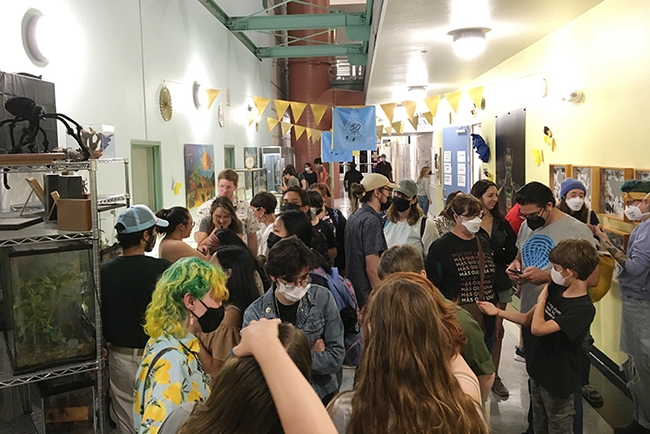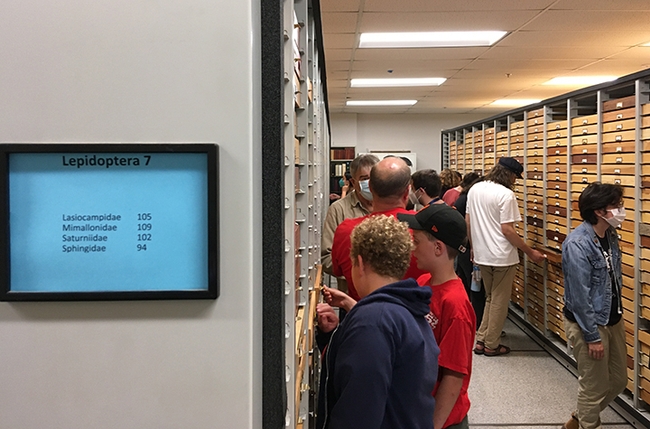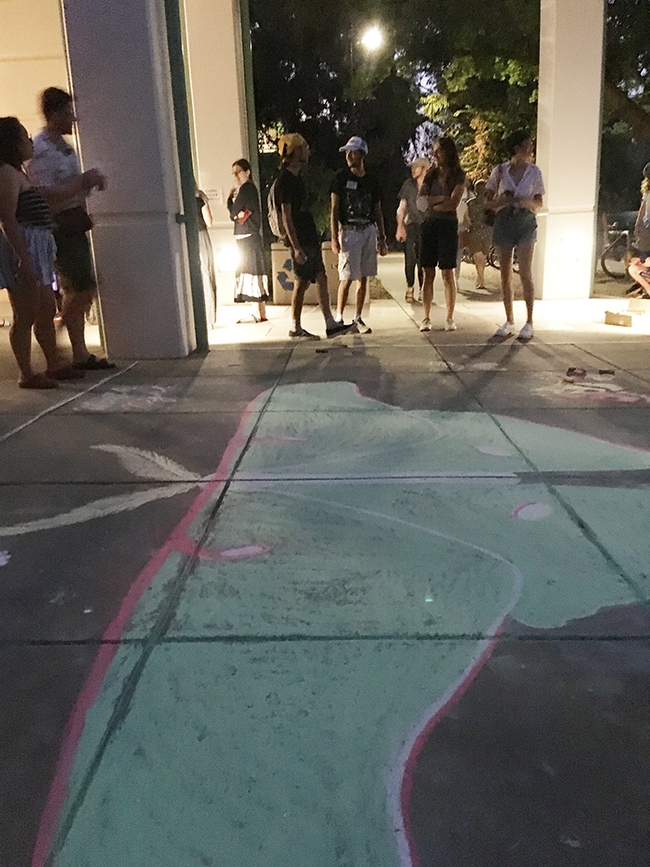- Author: Kathy Keatley Garvey
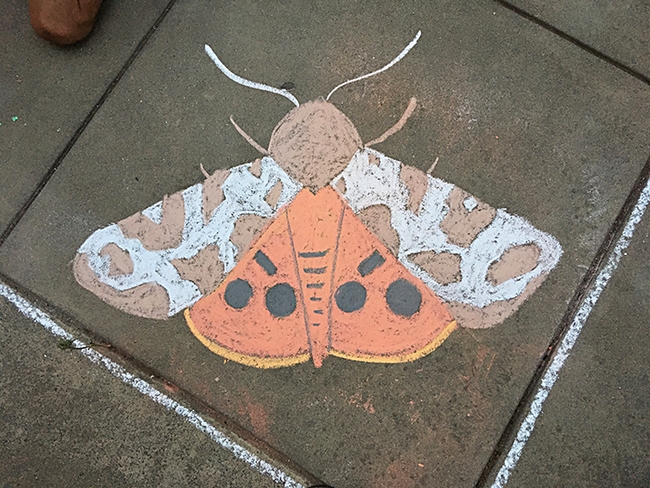
It was like a moth to a flame--or 400 moths to a flame--when a record crowd surged into the Bohart Museum of Entomology Moth Night for its July 30th open house.
After a two-year hiatus due to the COVID pandemic, "how great it was to have the doors open again for the public," said entomologist Jeff Smith, curator of the lepidoptera collection.
The 400-member crowd, thought to be the largest crowd at the Bohart, other than at UC Davis Picnic Day, was there to learn more about moths, draw images of moths on the sidewalks, enjoy an evening of camaraderie, and head outside to watch moths and other insects fly onto the hanging white sheet, part of the blacklighting demonstration display.
“People could draw whatever they wanted on chalk (outside the Academic Surge Building), but there were a lot of moths, although my kids went rogue and drew a soccer field and a figure,” said Tabatha Yang, the Bohart Museum education and outreach coordinator.
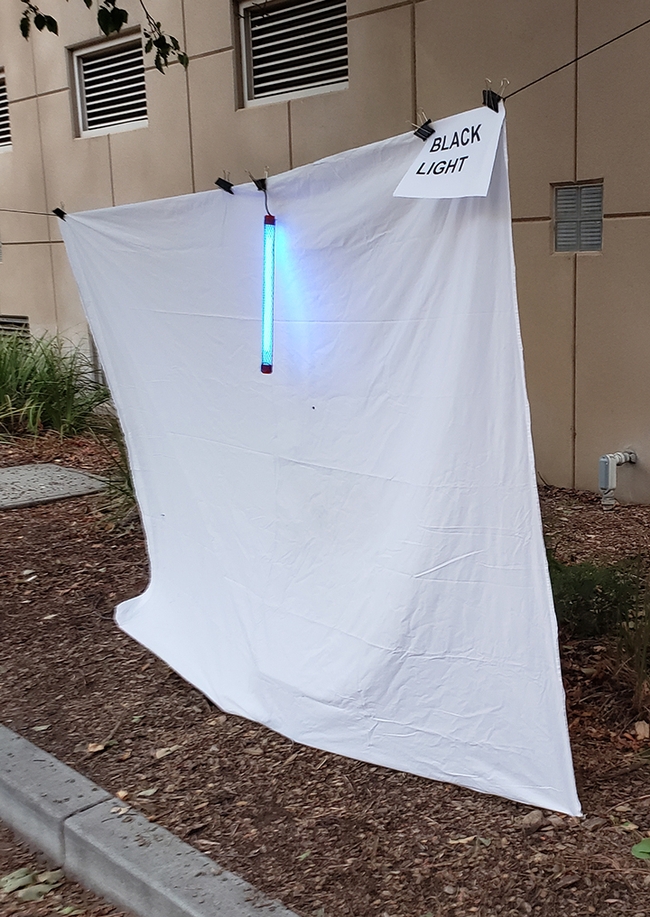
“We ran out of hot water, for the hot cocoa packets, and cookies half-way through!" Yand said, quipping "I thought we would be eating left over chocolate chip cookies at the Bohart all week, but alas that is not the case.”
The blacklighting display (white hanging sheet, ultraviolet light, and a generator) served as a demonstration site. "We had a few small beetles and a few small moths come in," Yang said.
The open house, which drew visitors from as far away as Alameda, took place the weekend before UC Davis summer sessions, so “the popularity among the college set was perhaps because of that, she said. "People were free from studying their required courses and so, on their own, they decided to seek out and learn about moths!”
Kareofelas fielded scores of questions about the Polyphemus moth, Antheraea polyphemus. “They are currently making their appearance in Davis, so a number of folks have seen them and had photos on their phones," he said. "A number of folks came with the desire to see a specific moth, and if we were lucky, it was located in the aisle we had open. Jeff (Smith) had pulled the drawers, from other aisles, with a number of specific species and had them labeled--a lot of questions about these drawers.”
"Some wanted to see the hummingbird moth, so I got to show Hyles lineata to a number of folks," Kareofelas said. "We had a lot of just plain 'good ol' interest' in seeing something and learning something about moths. The night started with a bang and went right to 11:00, still busy!"

"I was surprised at how popular the event was, how busy the store was, and how many folks showed up," Kareofelas said. "It was a great night!"
Smith spent the entire open house demonstrating how to spread the wings of moths. “I couldn't believe how many people came, and I was never ABLE to leave the table where I was demonstrating spreading," Smith said. "There was a constant group of people watching and asking questions, such as 'How did you become interested in this?' and of course, lots of questions on the spreading materials and techniques."
“The moment the door officially opened at 8 p.m., groups came in and headed in all different directions," Smith said. "One couple from Dixon was there with a group of scouts and they must have hung around my demo for 45 minutes with all kinds of interest and questions. People showed me photos on their cell phones of the white-lined sphinx moth, the ceanothus silk moth, and even a buck moth (Hemileuca) from Mono Basin."
Smith said he allowed "at least 10 different young people try their own hand at spreading a moth or two and that was really well received. I had a ziplock bag of surplus, papered moths and let some of the people take some for themselves. When it finally slowed a bit, I finally got up and couldn't believe it was already past 11 p.m." He headed over to the moth aisle where Kareofelas was still showing and answering questions about moths. "Greg did an amazing job. And, I ended up talking to a couple who work on campus until nearly 11:30."
Outside, the crowd marveled at the chalk drawings, including the tiger moths created by Srdan Tunic of UC Davis, a second-year master's degree student in art history. Skilled in street art and in academics (his Linked In profile indicates "Curating: creating bridges between art and people, ideas and objects"), Tunic is the co-founder, researcher and guide of Street Art Walks Belgrade, where he conducts lectures and tours on street art, graffiti, and the history of Belgrade. He holds a bachelor of arts degree (2008) in art history from the University of Belgrade, Serbia, and a master of arts in cultural policy and management (2017) from the University of Arts, Belgrade. He expects to receive his master's degree in art history from UC Davis in May of 2023.
The Bohart Museum, located in Room 1124 of the Academic Surge Building, 455 Crocker Lane, UC Davis campus, and directed by UC Davis distinguished professor Lynn Kimsey, houses a global collection of more than eight million insect specimens. It also houses a live "petting zoo" (Madagascar hissing cockroaches, stick insects and tarantulas) and an insect-themed gift shop. The latest t-shirt features a Jerusalem cricket, aka potato bug.
